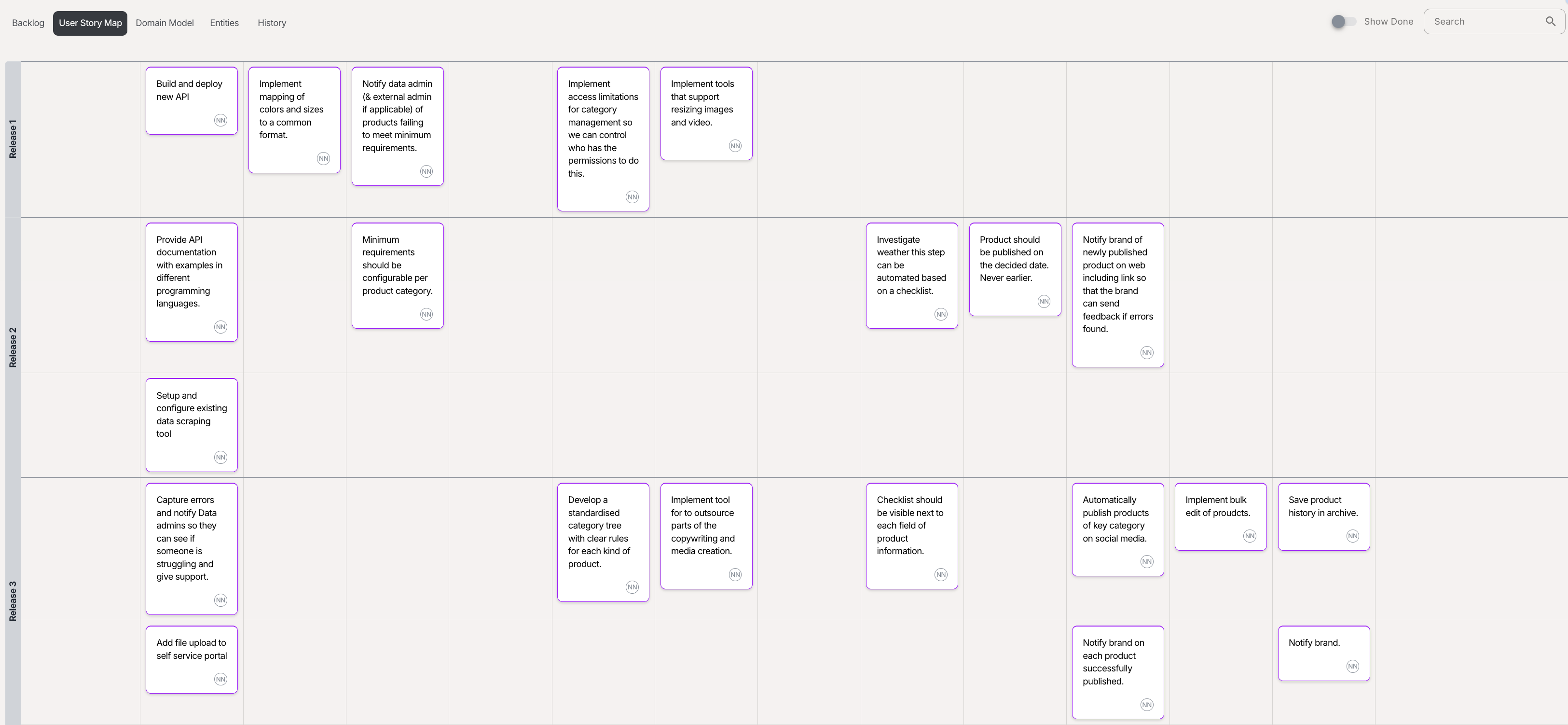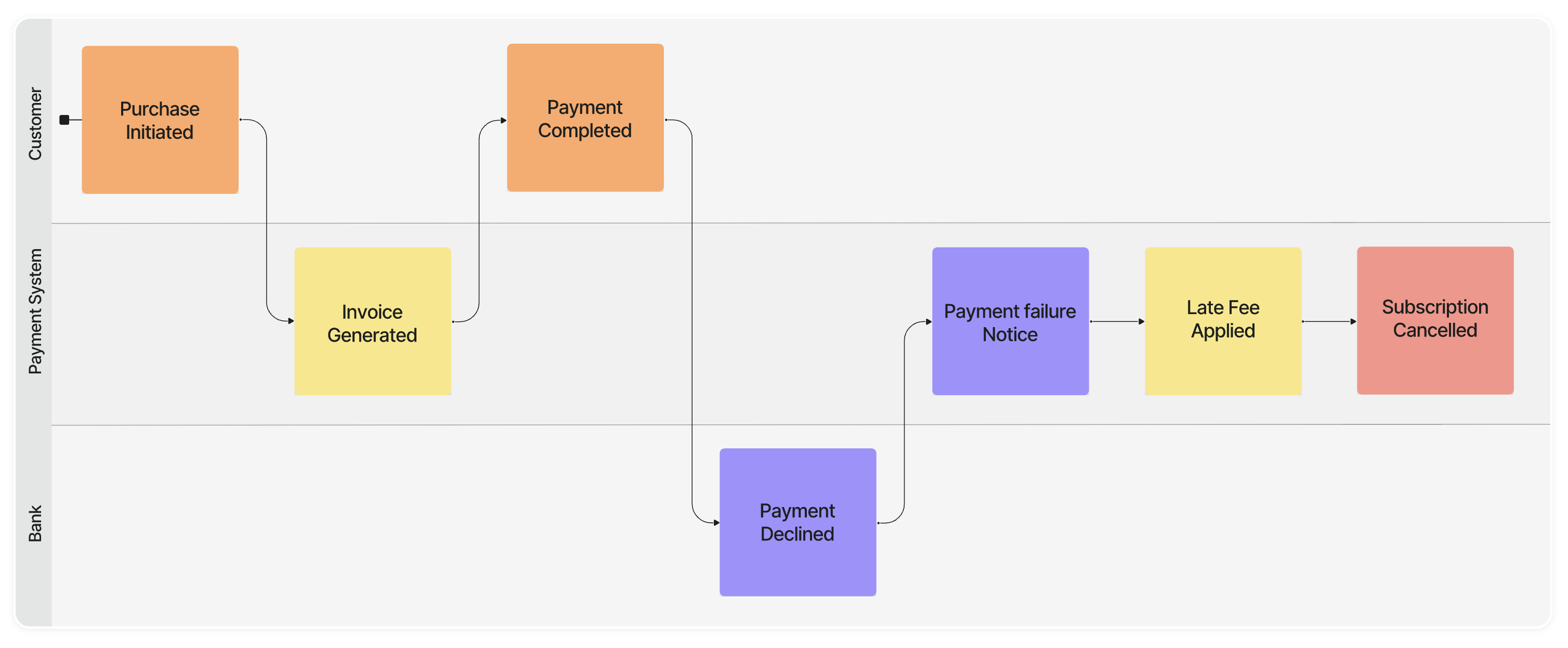

Event Storming is a powerful workshop-based technique used to explore and understand complex business domains. It can be applied at three distinct levels:
Big Picture Event Storming is typically the starting point. Its primary goal is to assess the health of an entire line of business—often across departmental silos—or to explore the viability of a new business model, such as a startup idea.
It helps participants develop a shared understanding of the domain and identify key business problems or opportunities. During this session, participants map Domain Events—significant occurrences in the business—along a timeline. Once the domain events are captured, other elements can be introduced as needed:
A common outcome of a Big Picture session is the identification of the most critical problems or opportunities, often finalized through participant voting.

At this level, the focus narrows to a single business process. The goal is to assess or (re)design the process, uncover bottlenecks, and resolve ambiguities. It builds upon the concepts used in Big Picture Event Storming, with additional modeling elements:

When more detailed modeling is needed—particularly for software design—Design-Level Event Storming comes into play. This level dives deep into a complex subdomain and aligns with Domain-Driven Design (DDD) practices. It focuses on designing software within a Bounded Context, often leading to a modern, component-based architecture.
In addition to previously mentioned elements, this level introduces:
At every level, the Domain Events and timeline form the backbone of the model. Other elements are layered in as needed to deepen understanding and support design decisions.
While Event Storming provides a solid foundation, most Agile teams work with User Stories in a Product Backlog. So, how do you transition from Event Storming outcomes to actionable stories that can be estimated, prioritized, and planned into sprints?
Some teams may start coding after a few Design-Level Event Storming sessions. However, many Product Owners and developers prefer the structure and predictability of a backlog or User Story Map. These tools support value-based planning, forecasting, and smoother collaboration.
One practical approach is to:
This process helps bridge the strategic insights of Event Storming with the practical needs of Agile delivery.

With many teams now working remotely, gathering around a physical whiteboard isn’t always feasible. That’s where digital tools come in.
One solution is Qlerify—a collaborative modeling platform that bridges the gap between Event Storming and an actionable backlog. Qlerify enables real-time process modeling with support for:
It also includes social collaboration features and integrates with Jira Cloud and Azure DevOps, allowing instant transfer of your model to Jira. Try it free at https://app.qlerify.com/signup.
If you’re interested in diving deeper, here are some excellent resources:
If you found this post useful, please share it!

